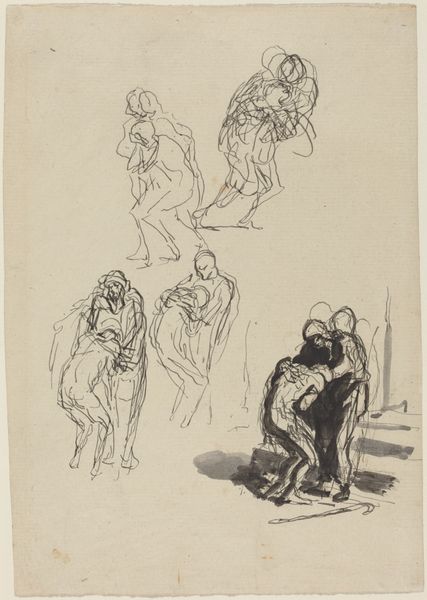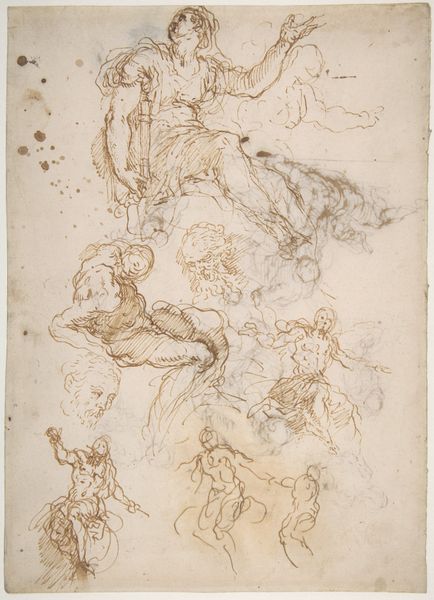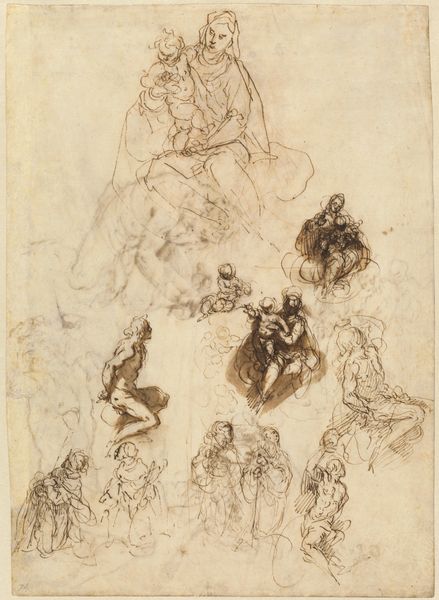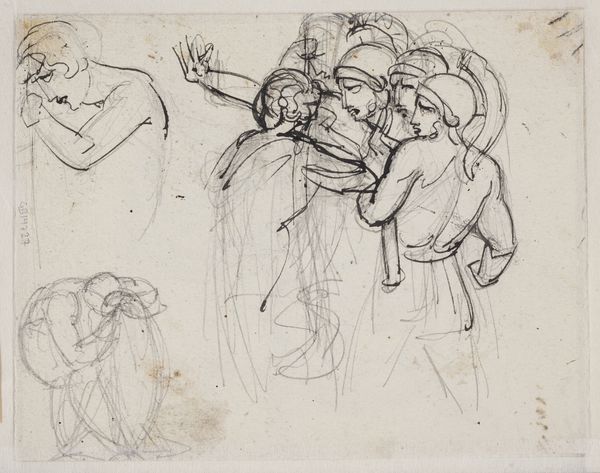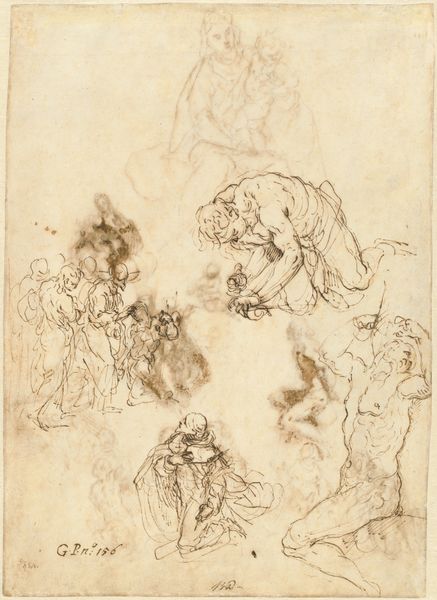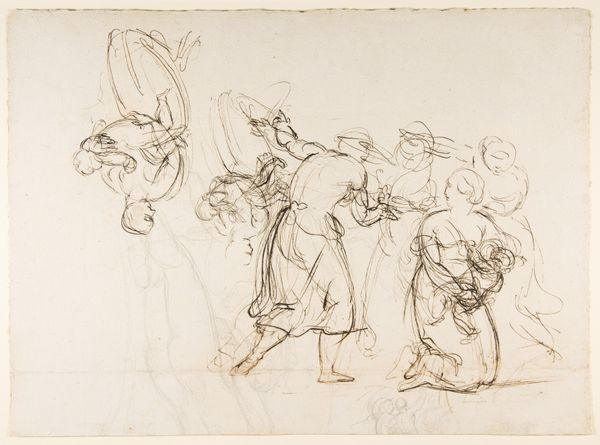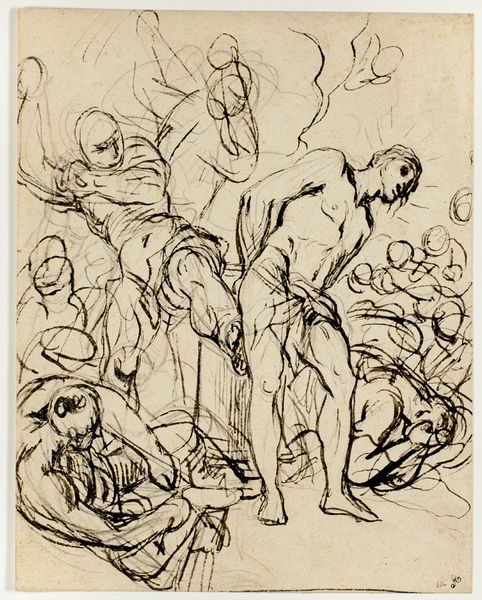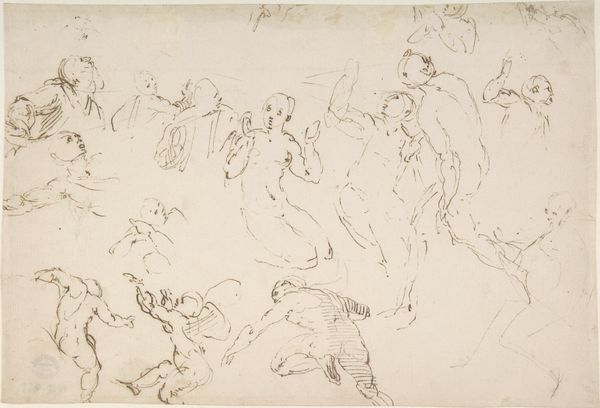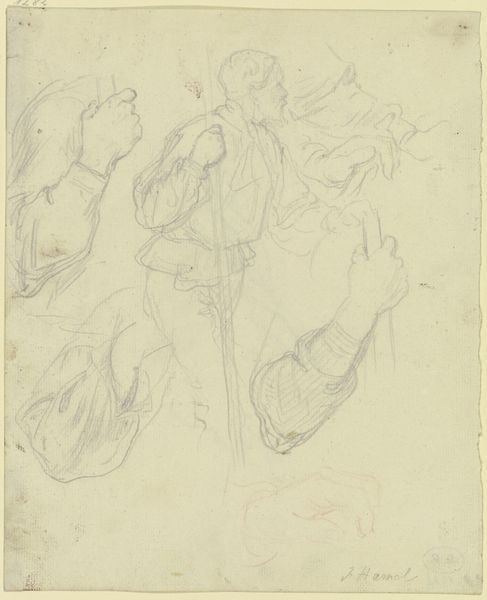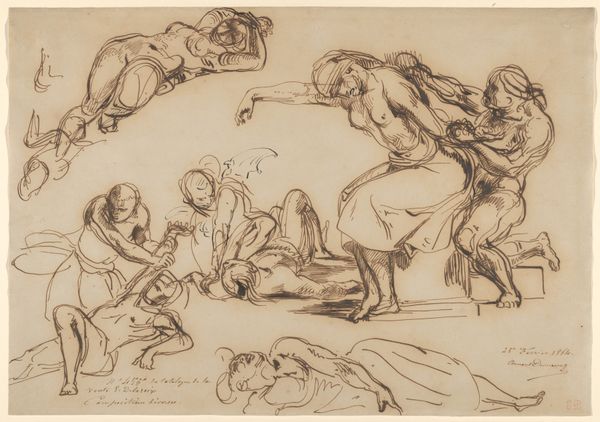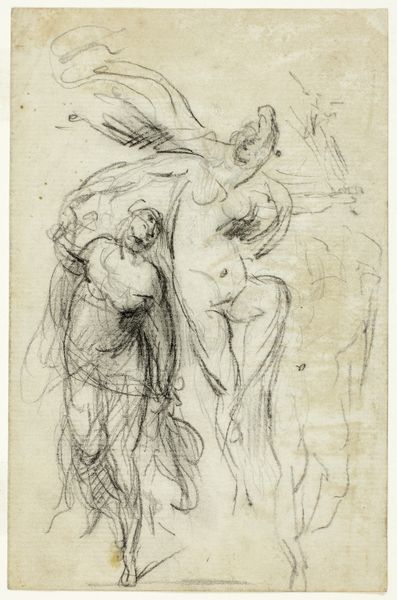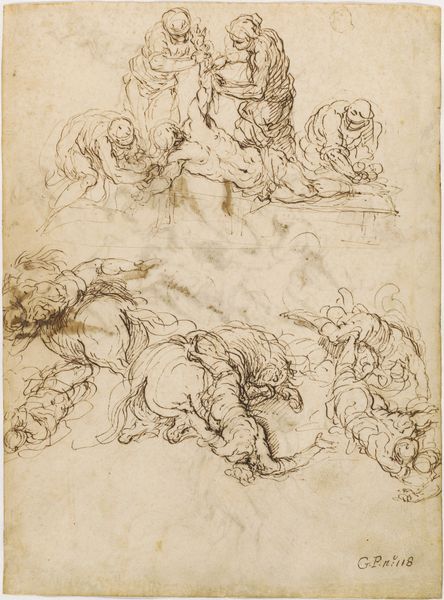
drawing
#
portrait
#
drawing
#
figuration
#
11_renaissance
#
history-painting
Dimensions: 307 mm (height) x 215 mm (width) (bladmaal)
Editor: This drawing, "Studies for a Flagellation," made with reddish-brown ink by Jacopo Palma, also known as il Giovane, somewhere between 1548 and 1628, depicts numerous figures in motion. The sketches create a palpable sense of violence and suffering. What social and political issues can we understand from the artwork, or is there an intersectional reading that can broaden my appreciation? Curator: Given the work’s title and your visceral reaction to the imagery, it's crucial to consider the historical context. Flagellation, a brutal form of public punishment, served not only to inflict physical pain but also to control populations, especially the marginalized. The concentration of powerful, male bodies in various stances might reflect societal structures where the spectacle of violence was wielded to maintain control. Editor: That's insightful. I initially saw a collection of sketches depicting biblical suffering. Your comment about 'control of the marginalized' urges me to investigate the politics in Jacopo Palma's period. I see the powerful use of light and shadow adds to the disturbing nature. Does this choice in drawing, combined with the theme, hint at his own beliefs? Curator: That's precisely where we can explore deeper questions about Palma’s potential positionality and intention, despite it being studies. Could it be seen as complicit with oppressive power structures of his era, or potentially, through a critical lens, a subtle questioning of the nature of state-sanctioned violence? Are there cues within the poses and expressions of the figures? Editor: Now I'm reconsidering the bowed heads of those being flagellated. It reflects a certain subjugation, aligning with what you pointed out regarding the control of marginalised people. It adds a critical dimension to what I thought was simply a study for a painting. Curator: Exactly! We can appreciate the technical skill, yet, it becomes far more enriching and meaningful when examined in light of broader socio-political conditions. Does understanding that change how you feel about it? Editor: Absolutely, yes. I thought it was a purely historical piece, but you've illuminated the historical relevance that remains disturbingly contemporary. Curator: And hopefully, this will deepen your approach to the visual arts moving forward. There are other elements of the flagellation to explore at length too!
Comments
No comments
Be the first to comment and join the conversation on the ultimate creative platform.
